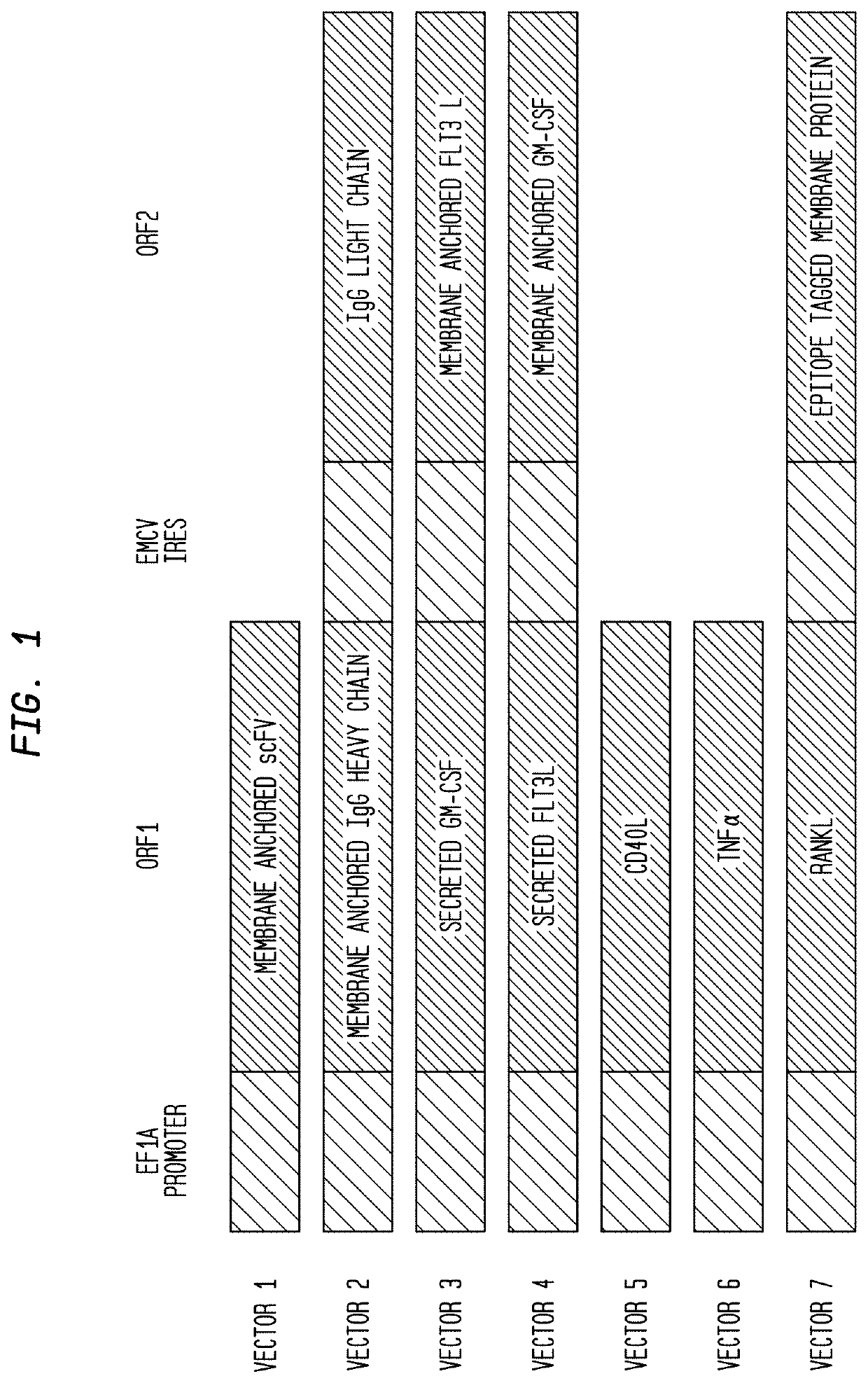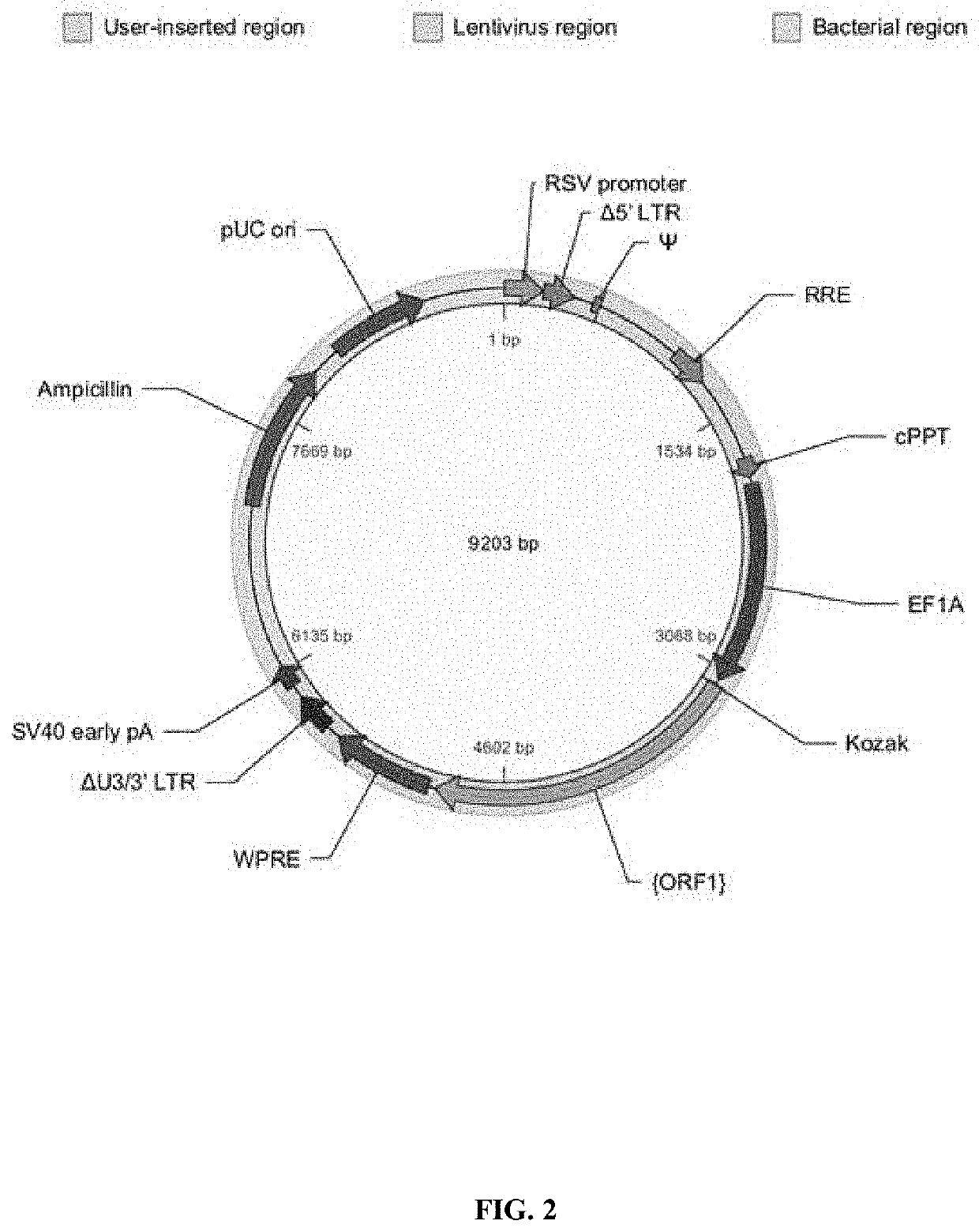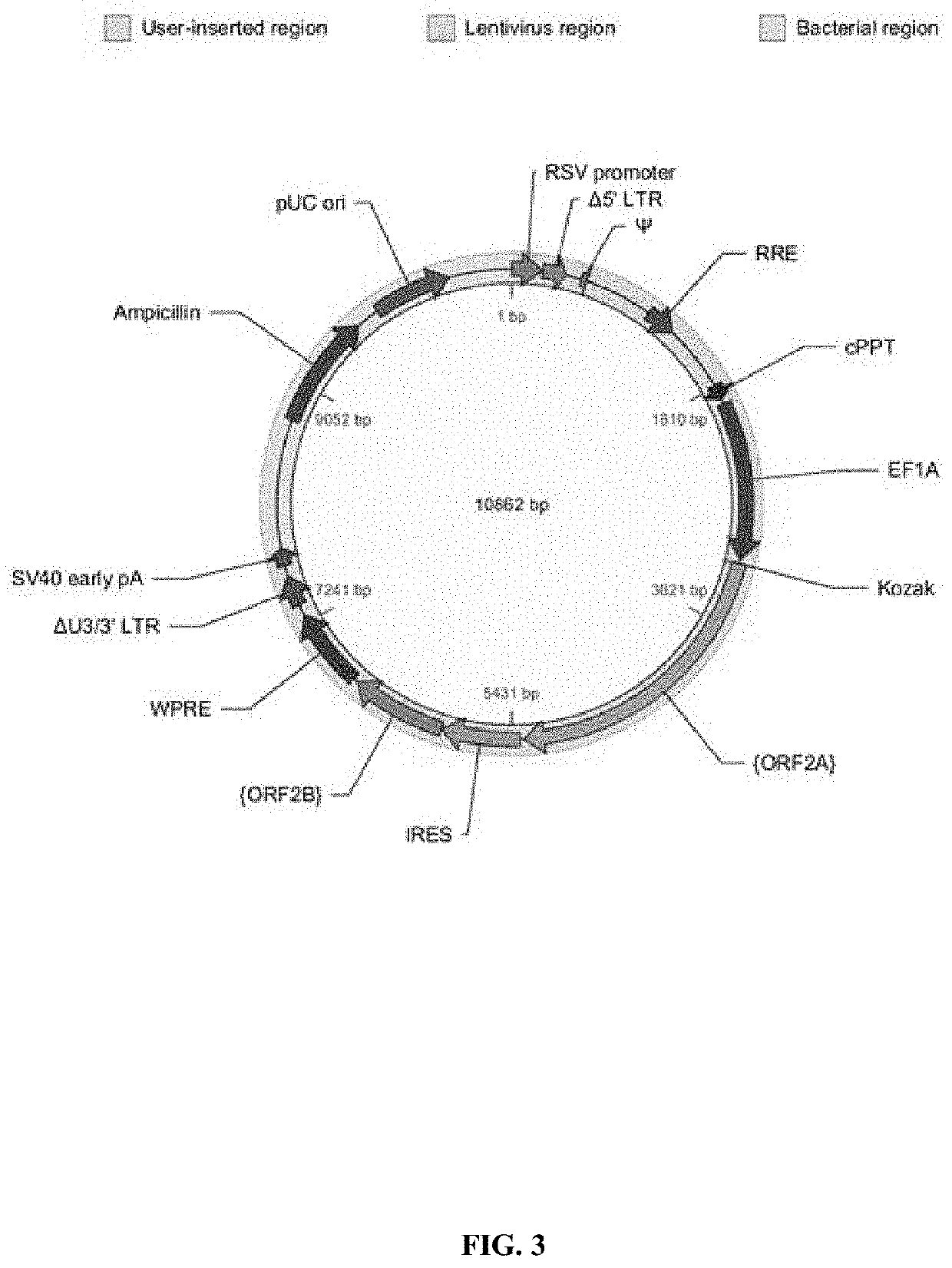Compositions and methods for in vitro activation and expansion of serial killer t cell populations and passive immunization of a cancer patient with tumor cell killing cells
a technology of serial killer t cells and in vitro induction, which is applied in the direction of immunoglobulins, peptides, drugs against animals/humans, etc., can solve the problems of uncontrolled growth of cancer cells, unmaintained balance, and under- or over-reacting immune responses, so as to stimulate synergistic expansion of cytotoxic serial killers and reduce tumor burden
- Summary
- Abstract
- Description
- Claims
- Application Information
AI Technical Summary
Benefits of technology
Problems solved by technology
Method used
Image
Examples
example 1
[0586]The Examples make use of, but are not limited to, the methods described hereinbelow.
Western Blotting
[0587]Briefly, cells are lysed with cold lysis buffer and centrifuged to pellet cellular debris. Protein concentration of the supernatant is determined by a protein quantification assay (e.g., Bradford Protein Assay, Bio-Rad Laboratories). The lysate supernatant is then combined with an equal volume of 2×SDS sample buffer and boiled at 100° C. for 5 minutes. Equal amounts of protein in sample buffer are loaded into the wells of an SDS-PAGE gel along with molecular weight marker and electrophoresed for 1-2 hours at 100 V. Proteins are then transferred to a nitrocellulose or PVDF membrane. The membrane is then blocked for 1 hour at room temperature using 5% non-fat dry milk in TBST blocking buffer. The membrane is then incubated with a 1:500 dilution of primary antibody in 5% non-fat dry milk in TBST blocking buffer, followed by three washes in 20 Mn Tris, Ph 7.5; 150 mM NaCl, 0.1...
example 2
[0602]A tumor cell line can be selected for modification, and lentiviral transfection of recombinant immune modulator sequences may be used to stably integrate immunomodulators into the cell genome. Example 3 below describes 7 lentiviral vectors (vector 1, vector 2, vector 3, vector 4, vector 5, vector 6 and vector 7) that may be used to stably integrate immunomodulators into the cell genome.
[0603]According to some embodiments, two recombinant immunomodulator proteins may be transfected simultaneously, followed by transfections of two more recombinant immunomodulator proteins simultaneously, followed by transfection of a single recombinant immunomodulator protein to achieve the total of five recombinant peptides. According to some embodiments, two recombinant peptides may be transfected simultaneously, followed by transfection of a single recombinant peptide, followed by transfection of a single recombinant peptide, followed by transfection of a single recombinant peptide to achieve...
example 3
[0665]A schematic of the core lentiviral vectors employed is shown in FIG. 1. The promoter is human elongation factor 1 alpha (EF1α) promoter and the internal ribosomal entry sequence (IRES) is derived from encephalomyocarditis virus (EMCV). The core vectors are described in detail hereinbelow:
[0666]Vector 1. Immunomodulator: scFv-anti-biotin-G3hinge-mIgG1 (to Generate Surface IgG).
[0667]A schematic of the organization of vector 1, used for the immunomodulator scFv-anti-biotin-G3hinge-mIgG1 is shown in FIG. 2. Table 11, below, shows the vector component name, the corresponding nucleotide position, the full name of the component and a description.
TABLE 11ComponentNucleotideNamePositionFull NameDescriptionRSV promoter 1-229Rous sarcoma virus (RSV)Allows Tat-independent productionenhancer / promoterof viral mRNA.Δ5′ LTR230-410HIV-1 truncated 5′ LTRTPermits viral packaging and reversetranscription of the viral mRNA.Ψ521-565HIV-1 psi packaging signalAllows viral packaging.RRET1075-1308HIV-...
PUM
| Property | Measurement | Unit |
|---|---|---|
| Volume | aaaaa | aaaaa |
| Fraction | aaaaa | aaaaa |
| Fraction | aaaaa | aaaaa |
Abstract
Description
Claims
Application Information
 Login to View More
Login to View More - R&D
- Intellectual Property
- Life Sciences
- Materials
- Tech Scout
- Unparalleled Data Quality
- Higher Quality Content
- 60% Fewer Hallucinations
Browse by: Latest US Patents, China's latest patents, Technical Efficacy Thesaurus, Application Domain, Technology Topic, Popular Technical Reports.
© 2025 PatSnap. All rights reserved.Legal|Privacy policy|Modern Slavery Act Transparency Statement|Sitemap|About US| Contact US: help@patsnap.com



